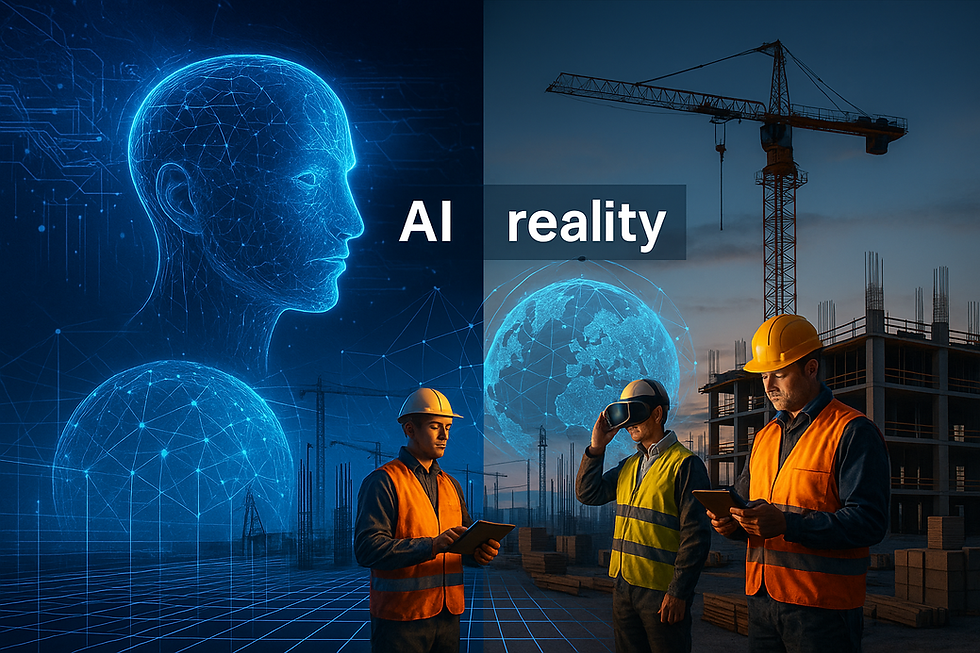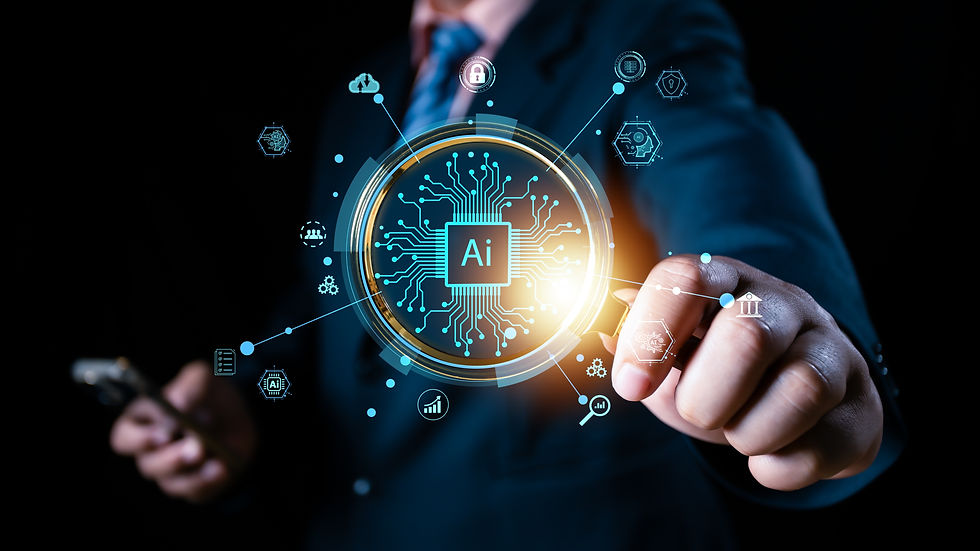AI in construction: Game-changer or just another myth?
- Rodaina Aboul Hosn

- May 7
- 2 min read

Artificial Intelligence (AI) has become one of the most discussed technologies in modern construction. It promises faster workflows, optimized designs, cost savings, and predictive insights. But alongside its rise, misconceptions have also spread—leading to unrealistic expectations or complete skepticism. So how do we know when AI is truly a valuable tool, and when it’s just a myth wrapped in fancy tech talk?
This blog aims to demystify AI in construction and help you distinguish between its just marketing talk and what actually works or adds value.
When AI is Just a Myth
When it’s expected to replace human judgment entirely
AI can analyze data, spot patterns, and automate tasks—but it doesn't understand context like experienced engineers or project managers. Trusting AI to make final decisions without human oversight is both dangerous and unrealistic.
When it's treated as a plug-and-play solution
Many believe AI can be “installed” and start solving problems immediately. In reality, AI systems require high-quality data, careful customization, continuous training, and ongoing monitoring.
When vendors oversell ‘black box’ solutions
Beware of companies offering generic AI tools without transparency. If they can’t explain how their system works or how it makes decisions, it’s likely built on buzzwords more than value.
When it’s used in isolation
AI is most powerful when integrated into a broader ecosystem—like BIM models, digital twins, monitoring systems, or operational workflows. Used alone, it becomes a disconnected solution with limited impact.
When AI is a Great Tool
When used for predictive analysis
AI excels in identifying risks before they escalate. For example, in geotechnical engineering, AI can predict potential settlement, slope failures, or even pile behavior based on historical and real-time data.
When automating repetitive, data-heavy tasks
Whether it’s quantity takeoff, document classification, or scheduling, AI can drastically reduce manual workload—allowing teams to focus on high-level decisions.
When enhancing design optimization
AI algorithms can test thousands of design scenarios in seconds, helping engineers find the most efficient, cost-effective, and sustainable solutions.
When supporting real-time monitoring
By analyzing data from sensors, drones, or IoT devices, AI can flag anomalies and trends—making site monitoring proactive rather than reactive.
When tailored to a specific use case
Custom AI models built for a particular type of project, soil condition, structural system, or workflow often outperform generic tools. The key is aligning the AI to your specific needs.
Conclusion
AI is neither a magic wand nor a marketing trick. It’s a tool—one that must be used wisely, with the right expectations and clear understanding. At ConstrucTech Services, we don’t just adopt AI for the sake of innovation—we integrate it where it fits, where it adds measurable value, and where it respects the expertise of the professionals using it.
Understanding the difference between AI myths and AI’s real capabilities is the first step toward building smarter, safer, and more efficient construction processes.



